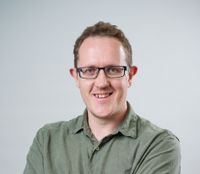Should you invest in gold coins?
Gold coins are issued for both commemorative and investment purposes. Know which is which before you buy


Commemorative gold coins have always been a popular choice among collectors and those hoping to preserve a specific memory, but are they a smart investment choice?
Buying gold coins is one of the most popular ways to invest in gold. But there is a difference between the coins that are issued for investment purposes and those that have, primarily, commemorative value.
While rising gold prices typically enhance the value of collectable gold coins, the value of collectable gold coins also depends on factors such as the coin's rarity, historical importance and market demand.
MoneyWeek
Subscribe to MoneyWeek today and get your first six magazine issues absolutely FREE

Sign up to Money Morning
Don't miss the latest investment and personal finances news, market analysis, plus money-saving tips with our free twice-daily newsletter
Don't miss the latest investment and personal finances news, market analysis, plus money-saving tips with our free twice-daily newsletter
“2025 has been an exceptional year for precious metals investment,” said Stuart O’Reilly, market insights manager at The Royal Mint. “As prices of precious metals prices have continued to surge over the last 12 months, we have seen heavy levels of trading on our website and several consecutive record-breaking months for both buying and selling of physical and digital products.”
Buying gold bullion or gold funds, while more conventional investing options, don’t offer the same character or potential for gifting that a decorative, high-quality or rare gold coin offers.
“Commemorative coins serve as a unique memento of significant people, events and anniversaries that customers can treasure,” says a spokesperson for The Royal Mint. “The Royal Mint produces commemorative coins with over 50 different designs each year.”
Before buying, though, it’s important to understand the difference between the different types of gold coin.
Are gold coins a good investment?
Gold coins can be a very good investment – but it depends on the coin.
The Royal Mint issues gold bullion coins, designed primarily for investment purposes. Rising gold prices have led to increased demand for these, with Royal Mint data indicating that two thirds of all spend on its website this year has been directed towards capital gains tax (CGT)-exempt bullion coins.
“Over the last few years, The Royal Mint has produced a range of new investment products, ranging from small bars to fractional coins, enabling investors to buy precious metals in new ways that facilitate their approach to investing,” a Royal Mint spokesperson said.
Collectable coins, however, are not primarily intended for investment purposes. Rather, they are intended to act as a unique keepsake for friends and family, or to mark a significant life event such as an anniversary.
Gold coins come in three forms:
- Proof coins: the highest standard of coin that the Mint produces. These are struck three times to produce a sharp, high quality finish, and like most of the Mint’s collectable coins, they are produced in either gold or silver;
- Brilliant uncirculated coins: these are similar to the coins that you carry in your pocket, but feature a specific feature or design, such as The Snowman;
- Bullion coins: while some have obvious commemorative or collectable value, these have a similar quality of finish to the coins in your pocket but are intended for investment purposes rather than their design quality.
Proof and brilliant uncirculated coins do have an investment value thanks to their gold content, but if you’re buying gold coins as an investment, it’s bullion coins you want. Some commemorative gold coins do end up selling for eye-watering sums, but this is thanks to their quality and rarity as opposed to the price of gold per se.
The most valuable gold coins of all time
In the UK, collectable gold sovereign coins tend to fetch the highest valuations. Their prices depend on the coin itself, how long ago they were issued, and how many were ever minted.
The most expensive selling gold sovereign coin was an Edward VIII Sovereign which sold to a collector for £1 million in 2020. The 22-carat coin is especially rare because it was never circulated – Edward VIII abdicated to marry American divorcee Wallis Simpson before its release.
George III Sovereign coins typically fetch a high asking price, according to physicalgold.com, thanks to their scarcity – one has sold for as much as £186,000.
Globally, however, rare American coins fetch the highest prices.
A historic 1822 Half Eagle, a gold coin with a face value of $5, sold for $8.4 million in 2021, while a 1787 Brasher Doubloon fetched $9.36 million in the same year.
Clearly a good year for commemorative gold coins, a 1933 Double Eagle gold coin – almost all of which were melted down after the US withdrew from the gold standard – with a face value of $20 sold at auction for $18.9 million in 2021, making it the most expensive gold coin ever sold.
A “Flowing Hair” dollar – the first to be minted by the newly-independent US in 1794 – sold for $10 million in 2013.
Commemorative gold coins for 2026
The Royal Mint has started to release its commemorative coins for 2026. Some of the highlights that have been released are:
- The Lunar Year of the Horse 5oz gold proof coin. Costing £21,995, this is the UK’s only official coin celebrating the Chinese year of the horse in 2026. It is also the most expensive 2026 commemorative coin currently available from the Royal Mint;
- The Sovereign 2026 three-coin gold proof set. Including the Sovereign, Half-Sovereign and Quarter-Sovereign coins, the set is priced at £2,095;
- The Life of Queen Victoria 2026 £5 proof coin. Despite its nominal value, this 22 carat gold commemorative coin that celebrates the life of Queen Victoria sells for £5,395.
Commemorative coins for 2025
It’s not too late to buy a 2025 commemorative coin, especially if it was a memorable year for you – whether you got married, celebrated a new job, or retired from work. There are plenty of commemorative coins that could help you immortalise the year.
The gold standard of commemorative coins for 2025 is The Royal Mint’s Annual Set. The 2025 Annual Set honours the life of Queen Elizabeth The Queen Mother with a commemorative £5 gold coin, alongside gold coins dedicated to the modern railway, the Royal Observatory, Greenwich, the Red Arrows and stories of the Second World War.
A limited edition gold proof set containing all five coins in 22 carat gold costs £9,360 – but with only 50 available, this set is a true collector’s item. A silver proof set is available for £669.
Some other noteworthy collectable coins for 2025 include:
- The Bond of the 1980s 2025 1oz Gold Bullion Coin, ideal for Bond fans and priced at £2,622.40;
- The Piedfort Sovereign 2025 Gold Proof Coin, costing £1,620 and with a maximum mintage of 1,260 coins;
- The Royal Tudor Beasts The Queen’s Panther 2025 UK 2oz Gold Proof Coin; this coin is worth £6,940 now, but with an extremely limited mintage of just 56 coins, it could conceivably become a collector’s item.
Among the other commemorative coins released by the Royal Mint this year was a coin celebrating the iconic British rock band Iron Maiden; a 2oz silver proof coin from the set costs £275.
Coins like these are often favourites among music fans. On that note, you might want to check their vinyl collection for any of these rare and valuable records.
Get the latest financial news, insights and expert analysis from our award-winning MoneyWeek team, to help you understand what really matters when it comes to your finances.

Dan is a financial journalist who, prior to joining MoneyWeek, spent five years writing for OPTO, an investment magazine focused on growth and technology stocks, ETFs and thematic investing.
Before becoming a writer, Dan spent six years working in talent acquisition in the tech sector, including for credit scoring start-up ClearScore where he first developed an interest in personal finance.
Dan studied Social Anthropology and Management at Sidney Sussex College and the Judge Business School, Cambridge University. Outside finance, he also enjoys travel writing, and has edited two published travel books.
-
 The most influential people of 2025
The most influential people of 2025Here are the most influential people of 2025, from New York's mayor-elect Zohran Mamdani to Japan’s Iron Lady Sanae Takaichi
-
 Millions of parents are missing out on up to £720 a year in extra pension cash – are you affected?
Millions of parents are missing out on up to £720 a year in extra pension cash – are you affected?A mum who narrowly missed out on the pension boost said she “never knew the government rule existed” and wants other parents to use it
-
 8 of the best properties for sale with indoor gyms
8 of the best properties for sale with indoor gymsThe best properties for sale with indoor gyms – from a four-storey mews house in London’s Knightsbridge, to a 1920s Arts & Crafts house in Melbury Abbas, Dorset
-
 Top stock ideas for 2026 that offer solidity and growth
Top stock ideas for 2026 that offer solidity and growthLast year’s stock ideas from MoneyWeek’s columnist and trader, Michael Taylor, produced another strong performance. This year’s stocks look promising too
-
 Market predictions for 2026: Will Dubai introduce an income tax?
Market predictions for 2026: Will Dubai introduce an income tax?Opinion My 2026 predictions, from a supermarket merger to Dubai introducing an income tax and Britain’s journey back to the 1970s
-
 Stock markets have a mountain to climb: opt for resilience, growth and value
Stock markets have a mountain to climb: opt for resilience, growth and valueOpinion Julian Wheeler, partner and US equity specialist, Shard Capital, highlights three US stocks where he would put his money
-
 The steady rise of stablecoins
The steady rise of stablecoinsInnovations in cryptocurrency have created stablecoins, a new form of money. Trump is an enthusiastic supporter, but its benefits are not yet clear
-
 SRT Marine Systems: A leader in marine technology
SRT Marine Systems: A leader in marine technologySRT Marine Systems is thriving and has a bulging order book, says Dr Michael Tubbs
-
 Goodwin: A superlative British manufacturer to buy now
Goodwin: A superlative British manufacturer to buy nowVeteran engineering group Goodwin has created a new profit engine. But following its tremendous run, can investors still afford the shares?
-
 A change in leadership: Is US stock market exceptionalism over?
A change in leadership: Is US stock market exceptionalism over?US stocks trailed the rest of the world in 2025. Is this a sign that a long-overdue shift is underway?